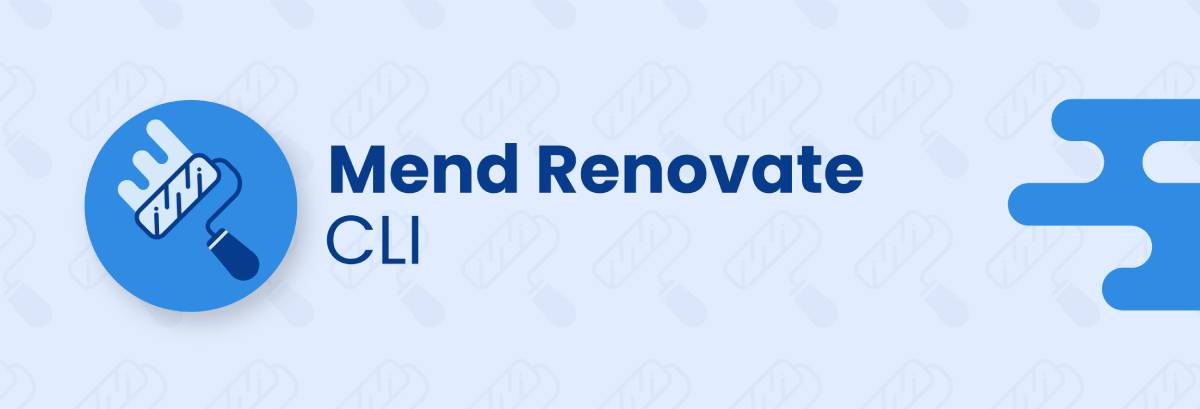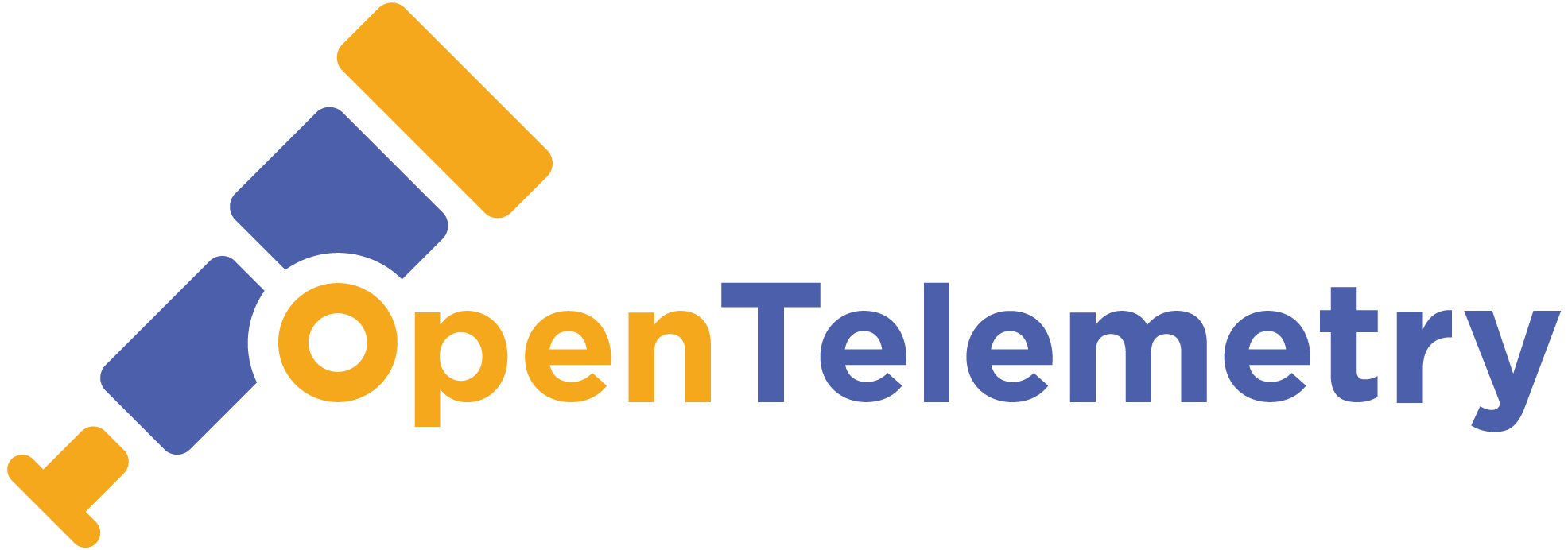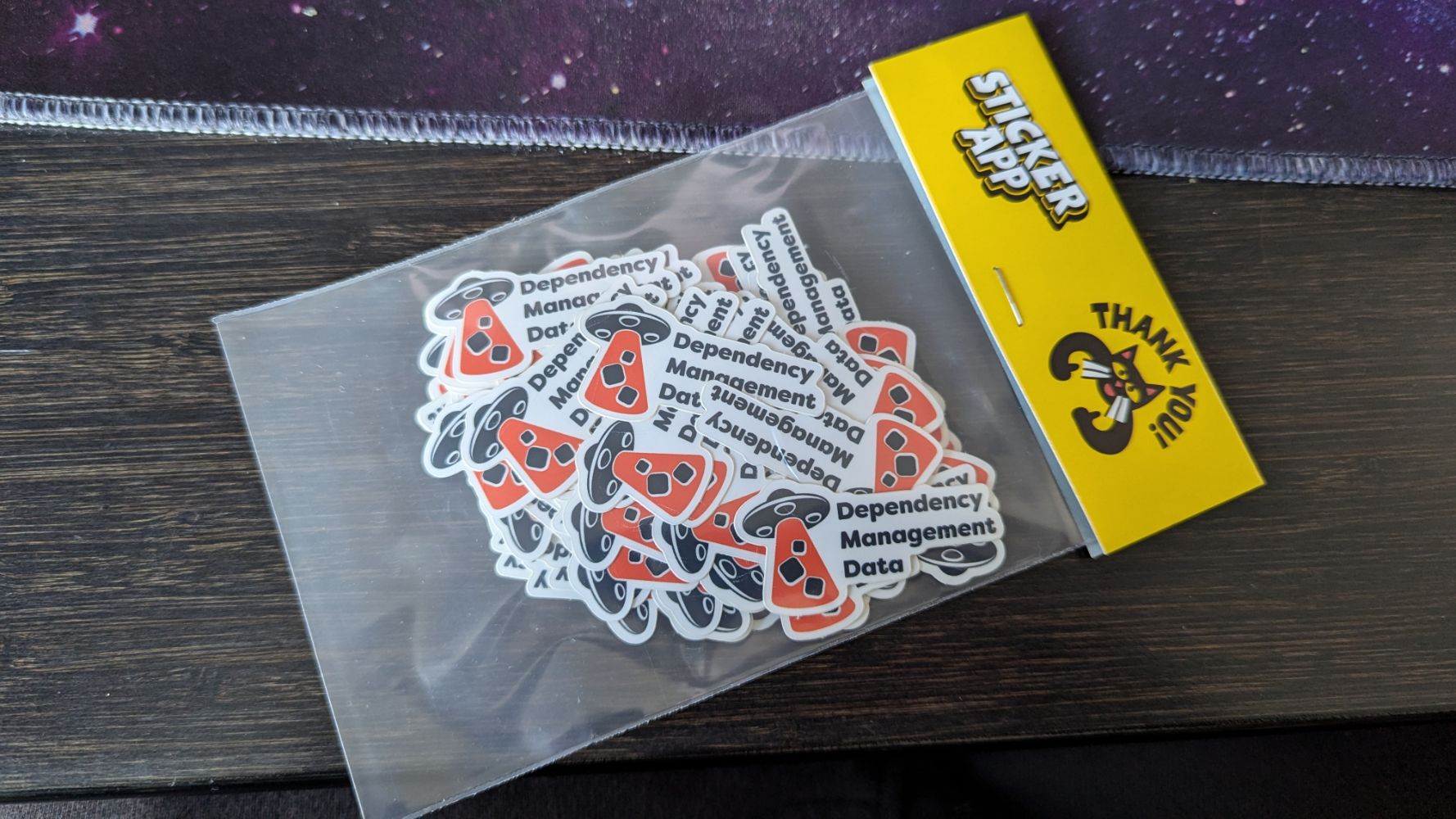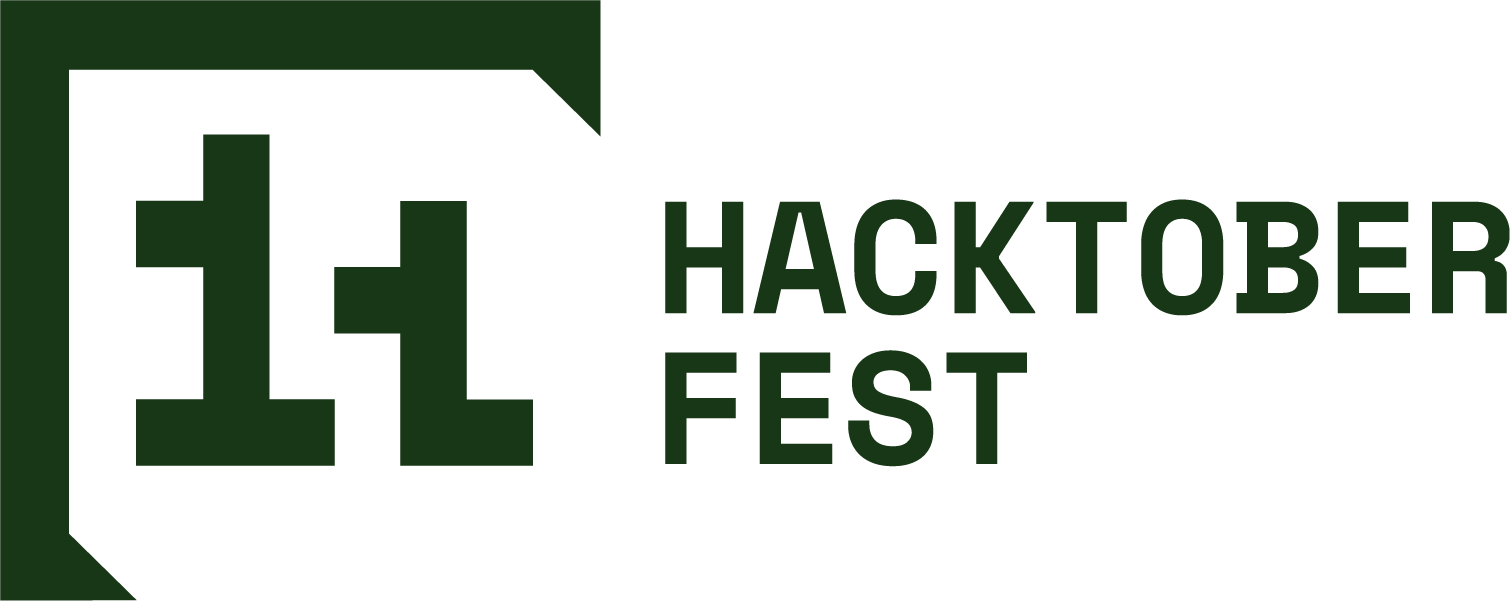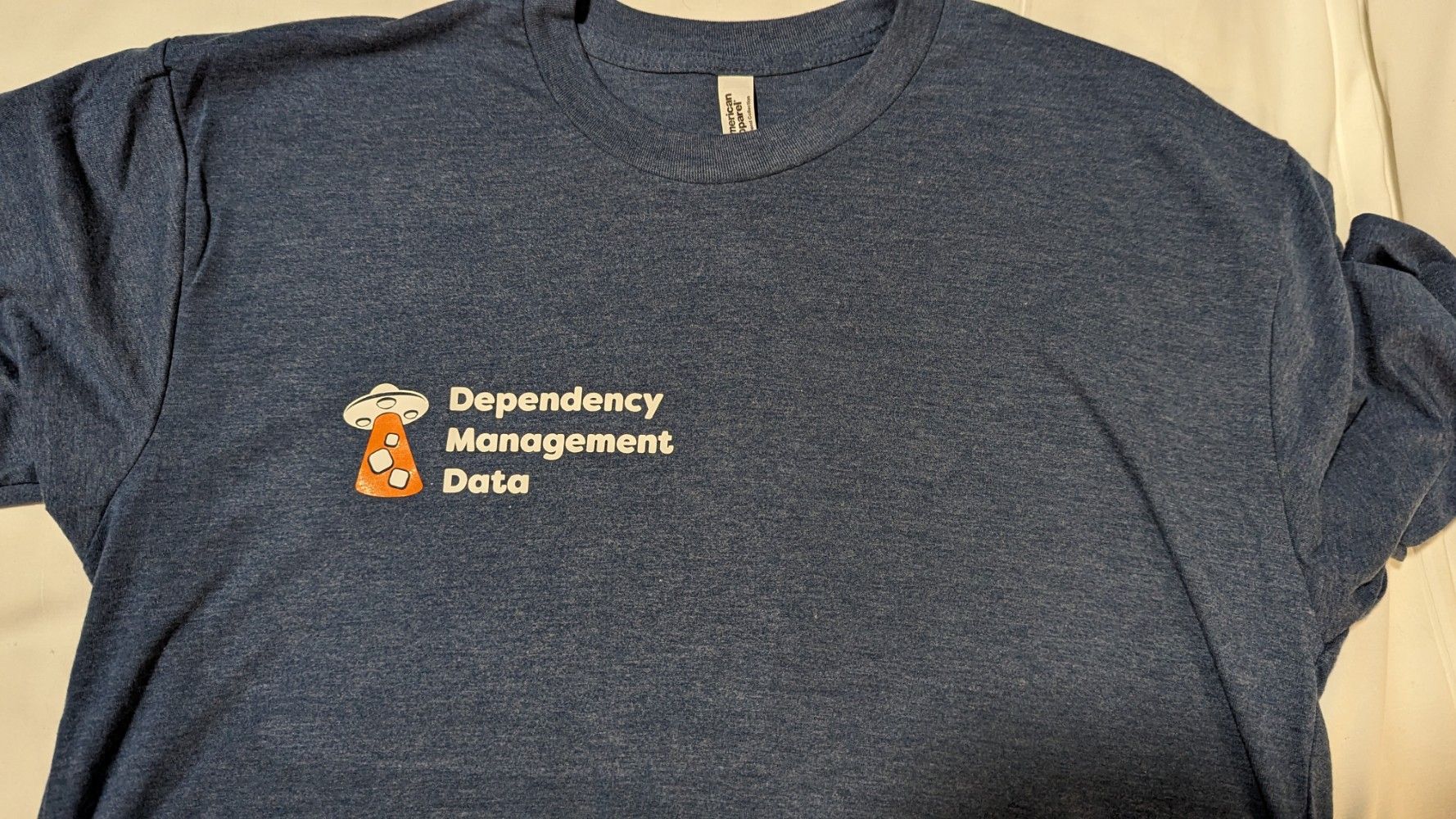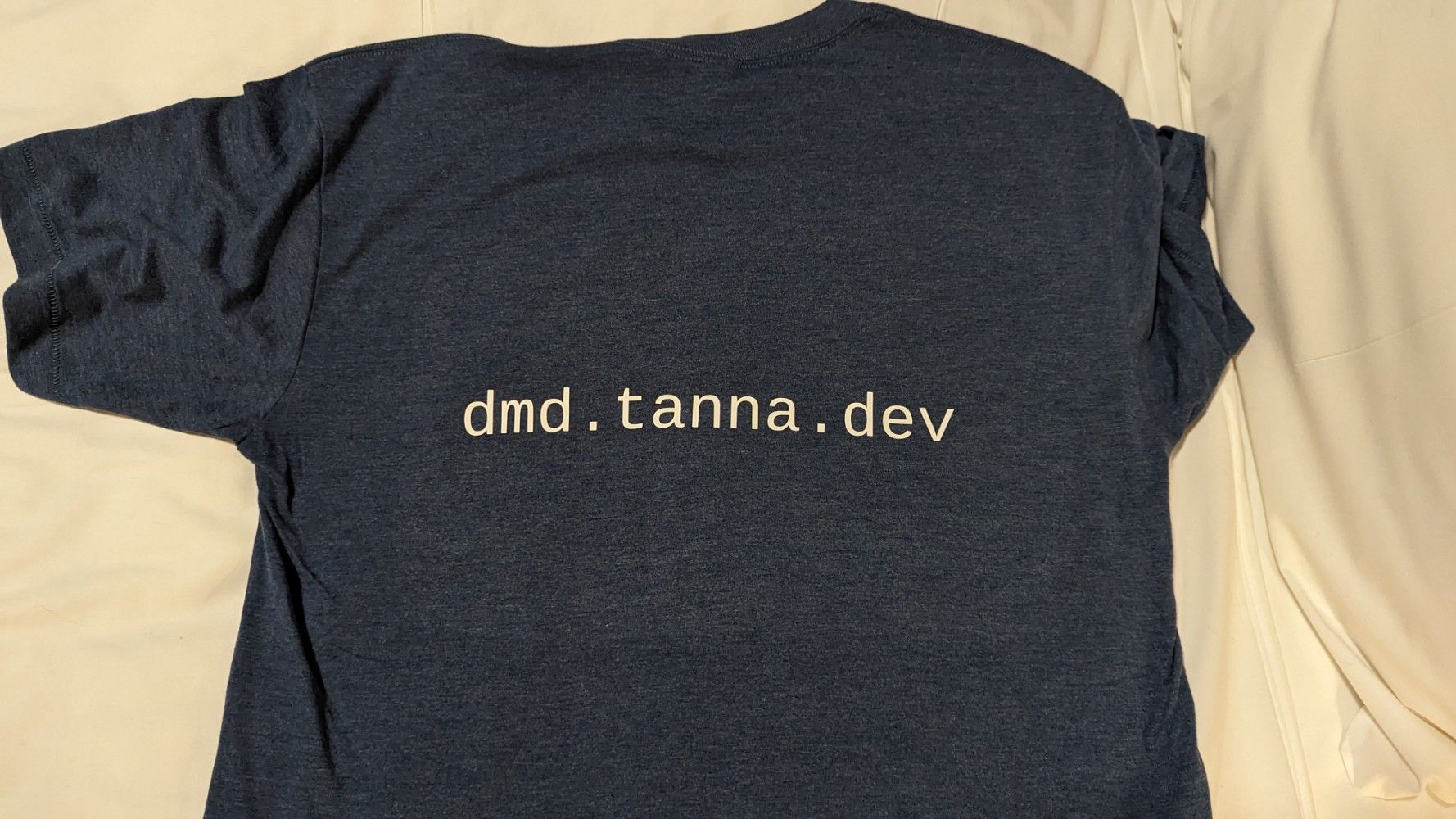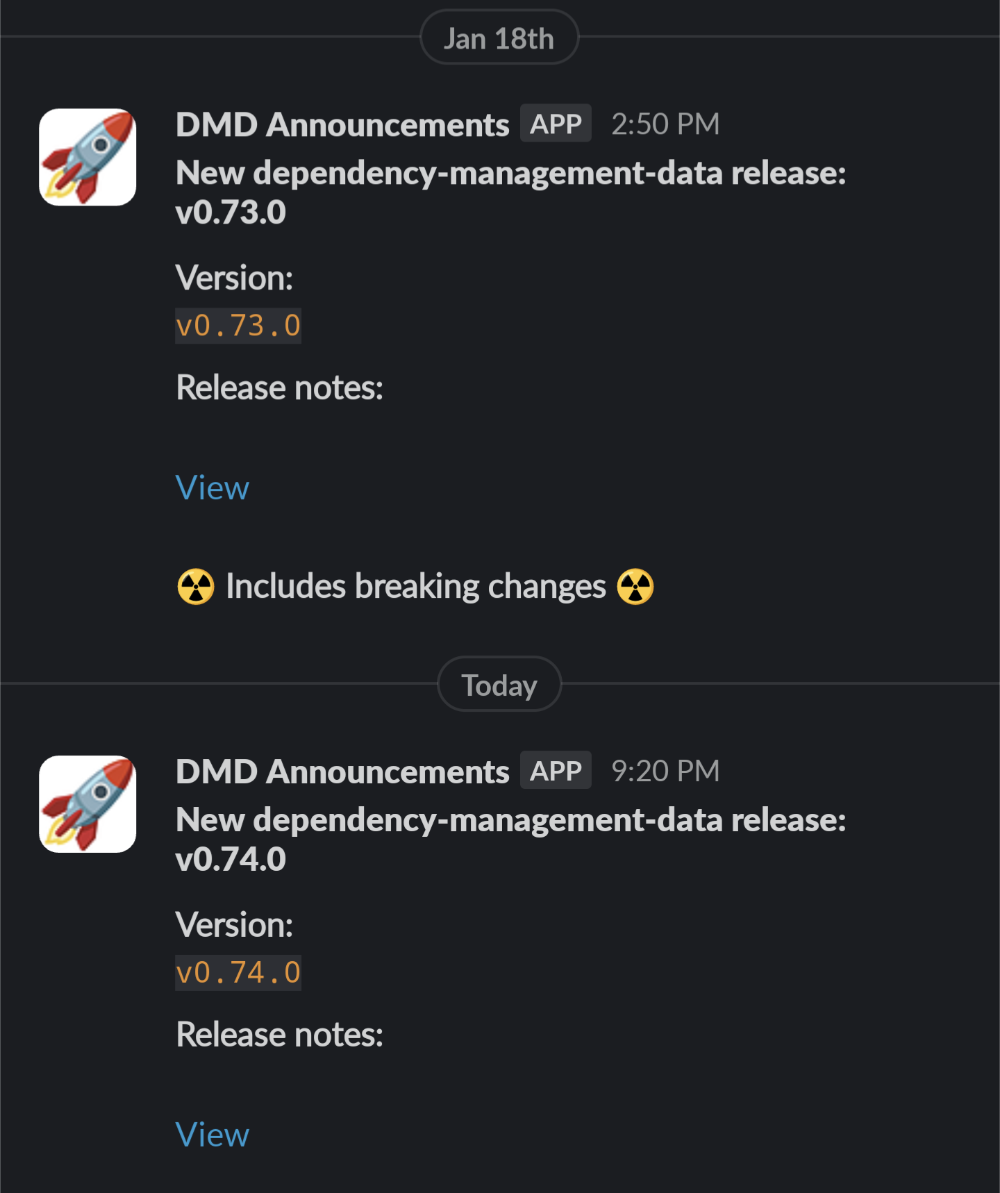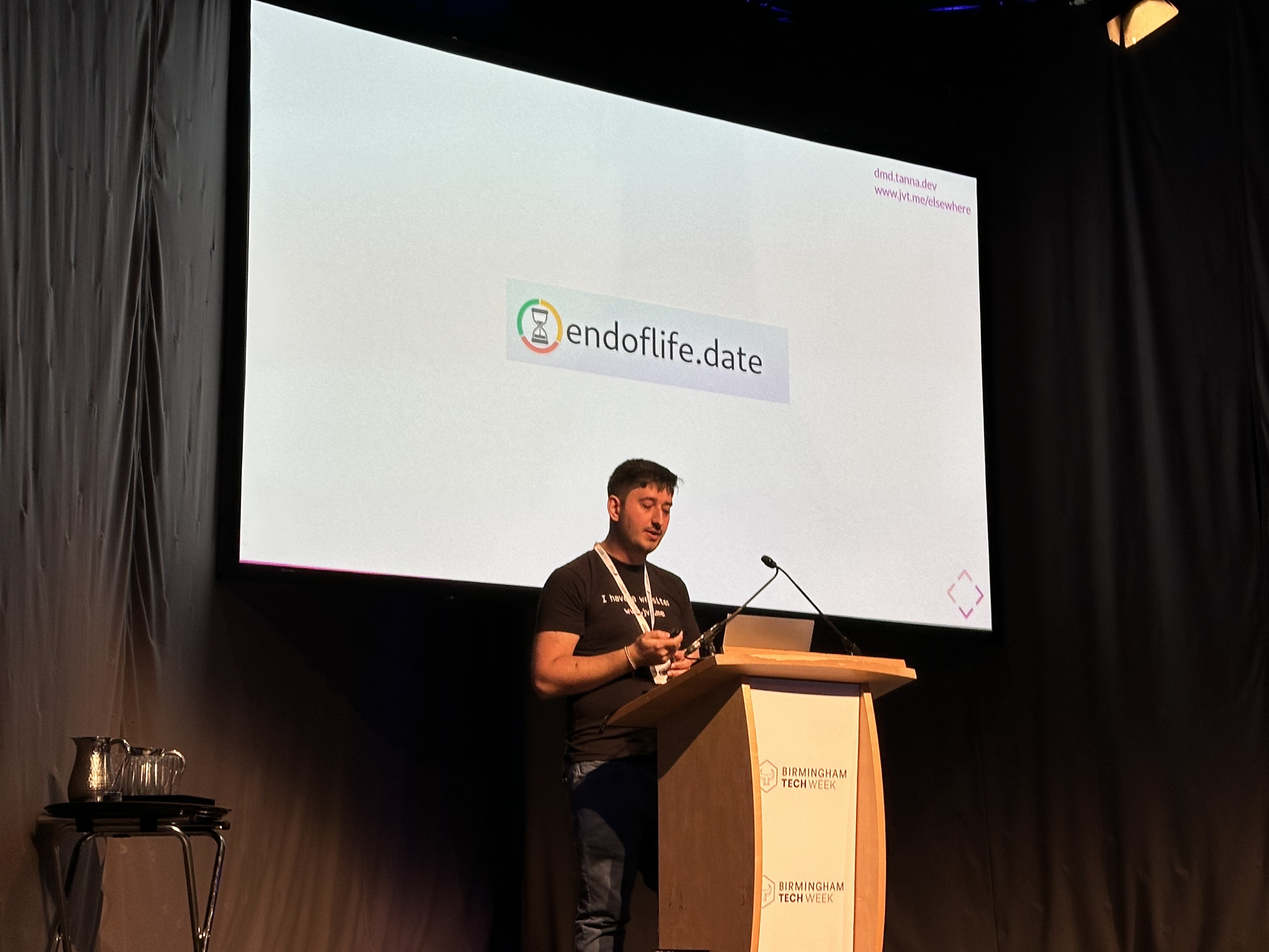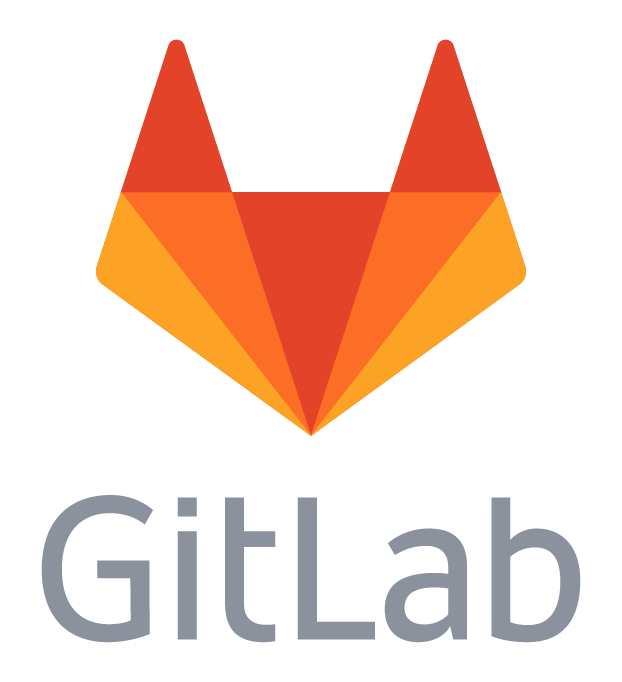Article
Properly patching packages: persistently producing patches for published projects, particularly practically prevented by patch-package policy
How to use patch-package to modify NPM dependencies, for instance when you're distributing an executable and you want to patch something you rely upon, without relying upon postinstall scripts.
Sat, 12 Apr 2025 21:36 Jamie Tanna #blogumentation
#nodejs
#npm
#dependency-management-data .
Article
Celebrating dependency-management-data's second birthday
Reflecting on the last year of the project.
Thu, 06 Feb 2025 09:02 Jamie Tanna #dependency-management-data .
Note
FYI that #DependencyManagementData v0.114.0 is out with an important refactor, but is one to watch out for!
If you're using the Renovate datasource, the package_names may be different to what they were previously. This now makes them actual package names, rather than the "pretty" depName but it's likely to catch folks out 👀
Thu, 19 Dec 2024 17:36 Jamie Tanna #dependency-management-data .
Article
You can now resolve remote presets when using Renovate's local platform in renovate-graph
Announcing a new release of renovate-graph, which can now follow github> and local> presets.
Thu, 12 Dec 2024 10:42 Jamie Tanna #renovate
#dependency-management-data .
Article
Creating renovate-packagedata-diff to diff Renovate package data dumps
Announcing the release of renovate-packagedata-diff which makes it possible to provide a semantic diff between different Renovate package data dumps.
Sun, 08 Dec 2024 17:47 Jamie Tanna #renovate
#dependency-management-data .
Article
Lessons learned adding OpenTelemetry to a (Cobra) command-line Go tool
Some reflections on what I've found good and not so good about instrumenting a command-line tool with OpenTelemetry.
Sun, 17 Nov 2024 18:03 Jamie Tanna #blogumentation
#go
#command-line
#opentelemetry
#dependency-management-data .
Article
Summarising the skipReasons for Renovate data exports
How to work out what skipReasons you have for your Renovate package data.
Fri, 08 Nov 2024 18:22 Jamie Tanna #blogumentation
#renovate
#dependency-management-data .
Article
How to use Dependency Management Data to discover which dependencies are participating in Hacktoberfest
Detailing how you could use dependency-management-data to gain insight into which dependencies you use are participating in Hacktoberfest.
Tue, 03 Sep 2024 21:24 Jamie Tanna #open-source
#hacktoberfest
#dependency-management-data .
Article
You can now parse repo-level Renovate configuration with renovate-graph
Announcing a new release of renovate-graph which now parses repo-level Renovate configuration.
Sun, 28 Jul 2024 14:56 Jamie Tanna #renovate
#dependency-management-data .
Article
Dependency Management Data's Open Policy Agent support is now a whole lot more efficient
Talking about the latest release of Dependency Management Data and some refactoring that's led to better performance.
Sat, 27 Jul 2024 19:55 Jamie Tanna #dependency-management-data
#open-policy-agent .
Article
Dependency Management Data's now on Mastodon!
Announcing the dependency-management-data Mastodon account for automated release announcements (and more?).
Sun, 14 Jul 2024 20:55 Jamie Tanna #dependency-management-data
#mastodon .
Article
Dynamically querying EndOfLife.date data for internal packages with Open Policy Agent and Dependency Management Data
How you can retrieve End-of-Life data via EndOfLife.date using Dependency Management Data's Policies functionality.
Sun, 14 Jul 2024 20:33 Jamie Tanna #dependency-management-data
#blogumentation
#open-policy-agent .
Article
Dependency Management Data is now a lot easier to work with when using Software Bill of Materials
Announcing an improved model for interacting with SBOMs, removing the need to understand the Repo Key up-front.
Tue, 09 Jul 2024 20:20 Jamie Tanna #dependency-management-data
#sbom .
Article
Dependency Management Data can now use sql-studio for database browsing
Announcing the availability of the sql-studio database browser for dependency-management-data's web application.
Fri, 28 Jun 2024 22:29 Jamie Tanna #dependency-management-data
#sql .
Article
Dependency Management Data's web application can now be deployed as a single static binary
Announcing dependency-management-data's embedded SQL browser interface.
Sun, 16 Jun 2024 14:40 Jamie Tanna #dependency-management-data
#sql .
Article
What can we learn about the backdooring of xz/liblzma, using OpenSSF Security Scorecards and dependency-management-data?
Looking at how the recent CVE-2024-3094 vulnerability could provide insight into other cases of risk in dependencies and their lack of code review.
Fri, 29 Mar 2024 21:50 Jamie Tanna #dependency-management-data
#security
#open-source .
Like
Liked
Anders Eknert (@anderseknert@hachyderm.io) Post details @Marcus@k8s.social Huh, I hadn't noticed they too changed their license. We're going to need tools to help avoid projects not hosted by a foundation in our supply chains if this keeps up. Maybe some Rego rules in @www.jvt.me@www.jvt.me 's DMD :)
https://dmd.tanna.dev/ Wed, 27 Mar 2024 19:09 Jamie Tanna #dependency-management-data .
Article
I'm on Changelog and Friends!
Announcing my first podcast appearance on Changelog and Friends, talking about salary history, the IndieWeb, ADHD and dependency-management-data, among other things.
Sat, 17 Feb 2024 17:58 Jamie Tanna #podcast
#adhd
#salary
#indieweb
#public-speaking
#dependency-management-data .
Photo
Very excited to see that the videos from #StateOfOpenCon #SOOCon24 are up - so if you missed my talk Quantifying Your Reliance on Open Source Software with #DependencyManagementData , you can find the recording on YouTube .
If you're interested, also check out the slides and the full talk writeup .
Fri, 16 Feb 2024 13:12 Jamie Tanna #state-of-open-con
#soocon24
#dependency-management-data .
Like
Liked
DVD (@dvdgc13@octodon.social) Post details Quantifying your reliance on #OSS by
@www.jvt.me@www.jvt.me
They started to create a dependency tree to determine whether they should take part in #hacktoberfest. But it's not always ☀️🌈 as in some cases all depends on a very fragile library ([xkcd comic#2347](https://xkcd.com/2347/))
Understanding how your business depends on software is important from a few points:
- how am I affected by migrating away from #OpenSource
- usage of unwanted libraries
- understand usage of libraries and their versions
- discover unmaintained, deprecated or vulnerable software
But all that applies to #InnerSource too!!
- how maintained are the dependencies?
- how are the security practices followed in the supply chain?
How can we do it? It can be done using #OpenSource with dependency-management-data https://dmd.tanna.dev/ with a CLI and web interface. It uses a #sqlite db, and provides a graphQL api too. And without vendor locking!
Dependabot API helped him to get some insights to know where contribute that were helpful to the company he was working. But it was not enough information. endoflife.date helped him to find what's soon to expire and other similar websites for other info. `dmd` helps in an easier way and it uses #renovate and other tools and services to get all the data for the model.
Then you can query the db with what you are interested. It comes with some pre-baked queries.
For #InnerSource you could define advisories and policies for when you don't have open APIs to query for that information. For example, flag when some software is using an old git server instance or set a set of code owners, or how many customer facing is using an outdated dependency.
Their [website has some case studies with more examples](https://dmd.tanna.dev/case-studies/).
#SOOCON24 Tue, 06 Feb 2024 14:43 Jamie Tanna #public-speaking
#dependency-management-data .
Repost
Reposted
Terence Eden (@Edent@mastodon.social) Post details Attached: 1 image
Hey! Look who it is! @www.jvt.me@www.jvt.me talking about dependence management at #soocon24
https://dmd.tanna.dev/ Tue, 06 Feb 2024 14:42 Jamie Tanna #dependency-management-data
#soocon24
#public-speaking .
Article
Quantifying your reliance on Open Source software (State of Open Con version)
A writeup of my talk about the dependency-management-data project at the State of Open Con 2024 conference.
Tue, 06 Feb 2024 13:06 Jamie Tanna #dependency-management-data
#public-speaking
#state-of-open-con
#soocon24
#open-source
#free-software
#sbom .
Article
Celebrating dependency-management-data's first birthday
Reflecting on the last year of the project.
Fri, 02 Feb 2024 21:54 Jamie Tanna #dependency-management-data .
Article
Introducing insight into your dependencies' health in dependency-management-data
How you can use the new dependency health functionality to better understand your dependencies.
Sat, 27 Jan 2024 21:02 Jamie Tanna #dependency-management-data .
Article
dependency-management-data now has a logo!
Very excited to note that the project now has a logo.
Wed, 24 Jan 2024 20:06 Jamie Tanna #dependency-management-data .
Photo
I was pretty chuffed with adding these Slack notifications (via Goreleaser and go-semantic-release) for releases to #DependencyManagementData which flag when there are breaking changes in the release! Makes it much easier to see at a glance, especially as there's a lot of changes going into it 🤓
Sun, 21 Jan 2024 21:48 Jamie Tanna #dependency-management-data .
Note
If you've been hearing me talking about #DependencyManagementData and are wondering about some real world scenarios it's been useful, check out the new Case Studies section on the site 👀
Also looking for more examples of where it's been useful!
Sun, 21 Jan 2024 21:05 Jamie Tanna #dependency-management-data .
Article
Using renovate-to-sbom with the GitHub Dependency Submission API
How to improve the data in GitHub's Dependency Graph by using an SBOM produced by Renovate data.
Tue, 16 Jan 2024 10:27 Jamie Tanna #dependency-management-data
#renovate
#sbom
#github .
Note
If you're running dependency-management-data , you'll now have an indication of which of Mitchell Hashimoto this change has landed in the -contrib project - thanks Mitchell for the hard work on them, and I'll be sure to keep the list updated as maintainers pick up ownership of other libraries!
Wed, 20 Dec 2023 11:33 Jamie Tanna #dependency-management-data .
Article
You can now interact with dependency-management-data using GraphQL
Announcing the release of the GraphQL API for dependency-management-data.
Thu, 07 Dec 2023 21:21 Jamie Tanna #dependency-management-data
#graphql .
Article
You can now use Open Policy Agent with dependency-management-data
How to use Open Policy Agent to perform much more effective flagging of package compliance with dependency-management-data.
Fri, 24 Nov 2023 18:31 Jamie Tanna #dependency-management-data
#open-policy-agent .
Article
Using dependency-management-data with npm's SPDX and CycloneDX SBOM export functionality
How to get started with npm's SBOM export functionality with dependency-management-data.
Sun, 05 Nov 2023 20:45 Jamie Tanna #dependency-management-data
#sbom
#npm .
Article
Introducing renovate-to-sbom to convert Renovate data to Software Bill of Materials (SBOMs)
Creating a new command-line tool for converting Renovate data exports to Software Bill of Materials (SBOMs).
Fri, 03 Nov 2023 21:46 Jamie Tanna #dependency-management-data
#renovate
#sbom .
Article
dependency-management-data now supports OSS Review Toolkit (ORT)
How to use data from OSS Review Toolkit (ORT) with dependency-management-data.
Tue, 31 Oct 2023 10:47 Jamie Tanna #dependency-management-data .
Article
Plea to Software Composition Analysis (SCA) providers and Software Bill of Materials (SBOMs) producers: give us more data!
Why I think dependency scanning tooling should be providing as much data as possible about scanned projects, to allow other tooling to make better inferences about the data.
Sun, 22 Oct 2023 14:15 Jamie Tanna #sbom
#dependency-management-data
#persuasive .
Repost
Reposted
Rob Allen (@rob@akrabat.com) Post details Attached: 1 image
TIL about https://endoflife.date from @www.jvt.me@www.jvt.me!
Part of a great talk about understanding your dependencies at TechMids. Fri, 20 Oct 2023 10:43 Jamie Tanna #dependency-management-data
#public-speaking .
Article
Utilising Renovate's local platform to make renovate-graph more efficient
How using the local platform with renovate-graph can increase the performance of dependency extraction.
Fri, 13 Oct 2023 18:12 Jamie Tanna #blogumentation
#renovate
#dependency-management-data .
Article
Using dependency-management-data with GitLab's Pipeline-specific CycloneDX SBOM exports
How to take advantage of SBOM export functionality in GitLab 16.4 with dependency-management-data.
Wed, 27 Sep 2023 21:24 Jamie Tanna #dependency-management-data
#sbom
#gitlab .
Note
For those who didn't make it to #DevOpsDays London, or who did and want to watch it again, my talk on dependency-management-data is now live on YouTube 👏🏼
Mon, 25 Sep 2023 19:15 Jamie Tanna #dependency-management-data
#devopsdays .
Article
dependency-management-data now supports Software Bill of Materials (SBOMs) and has better Dependabot support
Announcing improved support for Dependabot and support for Software Bill of Materials (SBOMs).
Sun, 10 Sep 2023 20:52 Jamie Tanna #dependency-management-data
#sbom
#github .
Photo
Very excited to be speaking at #TechMids2023 on October 20th about Quantifying your reliance on Open Source software , where we'll look at how you can get a better view of your organisation's Open Source and internal dependency usage using dependency-management-data 🎉
Thu, 31 Aug 2023 14:34 Jamie Tanna #public-speaking
#dependency-management-data
#tech-mids2023 .
Article
Custom Advisories: the unsung hero of dependency-management-data
How to use custom advisories with dependency-management-data to track packages that your organisation may not want to use.
Tue, 29 Aug 2023 11:02 Jamie Tanna #dependency-management-data .
Article
Getting started with Dependency Management Data
How you can get started using Dependency Management Data in 3 commands.
Tue, 25 Jul 2023 17:49 Jamie Tanna #dependency-management-data .
Article
Quantifying your reliance on Open Source software
A writeup of my talk at DevOpsNotts, about the dependency-management-data project and how to use it to understand your internal and external dependencies.
Tue, 25 Jul 2023 17:49 Jamie Tanna #dependency-management-data
#public-speaking
#devops-notts
#open-source
#free-software .



